Issue № 11(23)
DOI: 10.33098/2078-6670.2021.11.23.23-31. Krykhovetskyi I. Fractional organization of Ukrainian ambassadors of the Galician Sejm
Krykhovetskyi I. Fractional organization of Ukrainian ambassadors of the Galician Sejm
Purpose. The aim of the study is to identify the legal basis for the organization and establishment of the status of the Ukrainian Seimas factions of the second half of the nineteenth – early twentieth century. Methods. The methodological basis of the study was a set of general scientific, special scientific and historical methods, as well as the principles of historicism and objectivity. Results. It was established that the faction is defined as a natural institution of association of Sejm ambassadors, which allowed to carry out effective legislative activity, as the minimum number of deputies who could submit a bill or block the one under consideration was 15. Emphasis is placed on the leadership of the Ukrainian faction. in particular their social affiliation and political beliefs of leaders. The legal bases of the faction’s activity are considered separately. Emphasis is placed on how the activities of the Sejm influenced the state and legal thought of Galicia in the late nineteenth – early twentieth century. The peculiarities of the Polish-Ukrainian political confrontation within the walls of the Sejm, including in the process of factional organization, are studied. It was established that social affiliation had a significant influence on the political opinion of Galician Ukrainians, including the process of their factional organization. Thus, until the 1870s, the Ukrainian Sejm ambassadors were dominated by representatives of the clergy, and only at the turn of the nineteenth and twentieth centuries. political leadership passes to the secular intelligentsia – lawyers, lawyers. Scientific novelty. It has been established that for more than 50 years of the Seimas’ activity, no normative acts regulating the process of formation of the Seimas factions have been issued either by the central government or by the Seimas itself. The creation of Sejm factions was the competence of the deputies themselves or political groups, which were represented in the highest representative body of the region. Practical significance. The results of the study can be used in further historical and legal research, preparation of special courses.
Key words: Sejm, faction, deputies, Austria-Hungary, Galician Sejm.
References
1. Arkusha, O. (2003). Vybory do Halytskoho seimu 1901 roku: do problemy politychnoi modernizatsii ukrainskoho suspilstva Halychyny [Elections to the Galician Sejm in 1901: to the problem of political modernization of Ukrainian society in Galicia]. Visnyk Lvivskoho universytetu. Seriia istorychna. Vyp. 38. Lviv, 171-218. (in Ukraine)
2. Horban, T.Iu. (2005). Ideia sobornosti v ukrainskii suspilno-politychnii dumtsi pershoi chverti XX st. [The idea of catholicity in the Ukrainian socio-political thought of the first quarter of the XX century.]. Ukrainskyi istorychnyi zhurnal, 6, 95-102. Retrived from: http://resource.history.org.ua/publ/journal_2005_6_95. (in Ukraine)
3. Hrechko, I. Encyclical “Rerum Novarum” and reviews in Galicia. Retrived from: http://www.patriyarkhat.org.ua/statti-zhurnalu/entsyklika-rerum-novarum-i-vidhuky-v-halychyni/. (in Ukraine)
4. Ilyn, L. M. (2016). Evoliutsiia pravospryiniattia ukraintsiv pochynaiuchy z seredyny XIX st. [The evolution of the perception of Ukrainians since the mid-nineteenth century]. Naukovo-informatsiinyi visnyk Ivano-Frankivskoho universytetu prava imeni Korolia Danyla Halytskoho. Seriia: Pravo, 1, 59-64. (in Ukraine)
5. Ilyn, L. M. (2019). Ideia «sobornosti» v derzhavotvorchykh kontseptsiiakh Halychyny XIX – pochatku XX st. [The idea of “catholicity” in the state-building concepts of Galicia in the XIX – early XX centuries]. Naukovo-informatsiinyi visnyk Ivano-Frankivskoho universytetu prava imeni Korolia Danyla Halytskoho. Seriia: Pravo, 8, 15-21. (in Ukraine)
6. Ilyn, L. M. (2017). Pravovi ta orhanizatsiini zasady diialnosti ukrainskoi seimovoi fraktsii «Ruskyi klub» [Legal and organizational bases for the activities of the Ukrainian Sejm faction “Russian Club”]. Pryvatne ta publichne pravo, 3, 8-11. (in Ukraine)
7. Ilyn, L. M. (2009). Ukrainian Representation in the Galician Kraiovyi Seim in 1870–1876: Phd diss. Ivano-Frankivsk, 211 p. (in Ukraine)
8. Levytskyi, K. (1926). Istoriia politychnoi dumky halytskykh ukraintsiv 1848-1914 na pidstavi spomyniv [History of political thought of Galician Ukrainians 1848-1914 on the basis of memories]. Lviv: Drukarnia oo. Vasyliian u Zhovkvi, 736 p. (in Ukraine)
9. Mikula, O. (2004). Legal bases of the Galician Regional Sejm (1861-1918) organization and activity: Phd diss. Lviv, 179 p. (in Ukraine)
10. Chornovol, I. (2010). 199 deputativ Halytskoho seimu [199 deputies of the Galician Sejm]. Lviv: Triada plius, 224 p. (in Ukraine)
11. Chornovol, I. (2000). Ukrainska fraktsiia Halytskoho kraiovoho seimu 1861 – 1901 rr. [Ukrainian faction of the Galician Regional Sejm 1861–1901]. Lviv, 270 p. (in Ukraine)
12. Mudryj, M. (2017). Kwestia tożsamości wśród ruskich elit politycznych w Galicji. Prace Historyczne, 144 (2), 255-275. (in English)



